Should I Save or Remove My Diseased Tree?
Reading time: 6 minutesAs a tree owner, the classic "to be or not to be" question often translates to "to save or remove a tree."
Trees are the rock stars of your yards! However, when tree disease is part of the equation, figuring out whether to treat or remove it can feel quite overwhelming. We can understand how this decision might not be as easy for you, which is why we’re here to help you through the process. So first, let’s start off with how do you know for sure if your tree is, in fact, diseased?
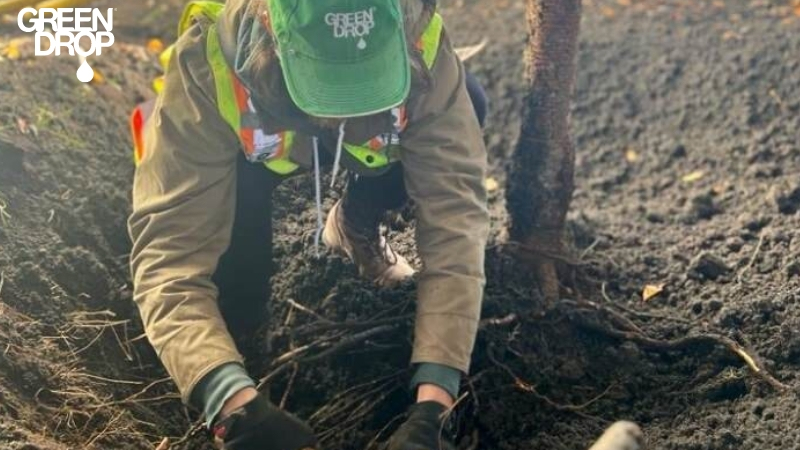
Identifying Tree Disease
When a tree starts showing signs of disease, it can be as subtle as a slow shift in leaf colour or as obvious as a sudden die-off in branches.
Common Symptoms of Tree Disease
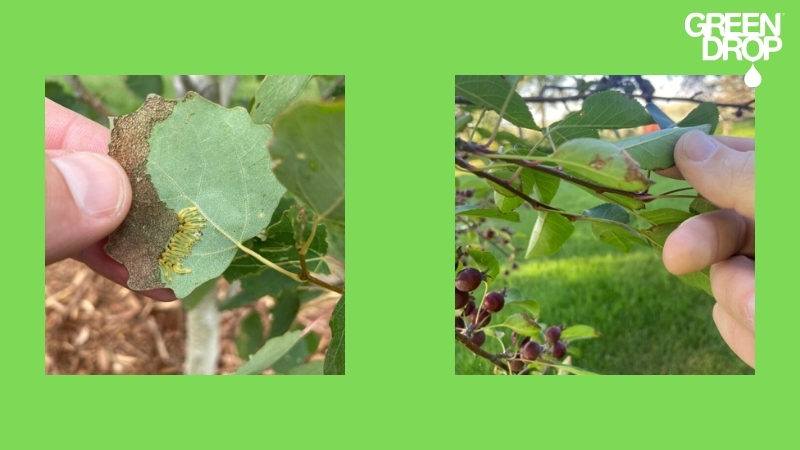
Keep your eye on these symptoms to catch diseases early:
- Leaves may turn yellow or brown outside of the typical autumn change or display unusual spotting.
- Premature leaf drop is often a distress call from a stressed tree.
- If a tree's growth slows down noticeably compared to previous years, it might be struggling with an internal issue.
- Look for wounds on the trunk or branches, peeling bark, or growths like mushrooms or fungi, especially around the base, which often indicates root decay.
- Cankers are a sure-fire sign of disease. Cankers are areas of dead bark on the branches or trunk of a tree, often sunken and discoloured.
- When a tree is diseased, its leaves may not develop to their full size or may appear misshapen.
- Trees may produce more sap or resin in response to physical injury or infection.
- Even with adequate soil moisture, diseased trees may show signs of wilting leaves.
If you’re still unsure, our arborists can help. With a team of ISA-certified professionals and a top-of-the-line disease diagnostics lab, we run the necessary tests to give you a definitive answer.
Early detection and quick action can sometimes save a tree, but in cases where the disease poses a broader threat, tree removal becomes necessary to maintain the health of the entire yard.
Diseases That Require Tree Removal
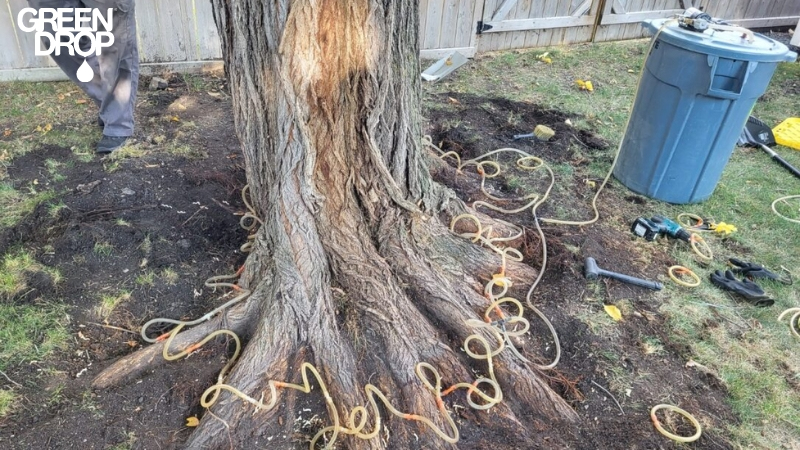
Certain diseases not only threaten the life of the infected tree but also pose risks to nearby plant life and even property.
- Dutch Elm Disease: This fungal disease is spread by elm bark beetles and can quickly decimate an elm population. Infected trees must be removed promptly to prevent the spread to healthy neighbours.
- Oak Wilt: Similar to Dutch Elm, this fungal infection spreads swiftly among oak trees and can kill a tree within a single season.
- Oak Decline: A critical disease that specifically affects bur oaks and a few other tree species throughout Western Canada and causes rapid and drastic leaf dieback.
- Bronze Leaf Disease: This is a fungal infection that spreads from one tree to another via airborne spores. BLD is difficult to detect and can quickly move through trees with only rain, wind, and warm temperatures to help it along.
- Emerald Ash Borer: While technically an infestation rather than a disease, the damage caused by these beetles is so severe that affected ash trees often require removal to prevent further spread.
- Phytophthora Root Rot: This disease is caused by a fungus-like organism that thrives in overly wet soil conditions, leading to the decay of a tree's root system. It affects a wide range of tree species and is particularly destructive because it hampers the tree's ability to absorb water and nutrients.
- Chestnut Blight: This fungal disease causes cankers that girdle the stem and branches, eventually killing the tree. Infected trees require removal to control the spread of the disease.
When to Save and When to Remove
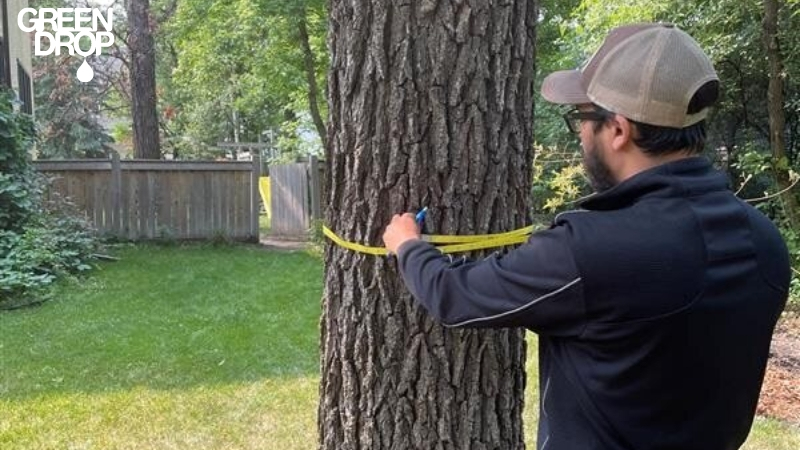
We’ll need to assess the condition of your tree and yard before making this important decision.
Extent of Visible Damage and Disease Progression
Assessing the amount of visible damage is crucial. Look for signs like significant bark loss, deep cracks, and large dead branches. If a tree shows extensive damage or disease symptoms that affect more than half of its structure, it may be too compromised to save.
Diseases like Dutch Elm Disease, which show clear, progressive signs, often necessitate removal to prevent spread.
Structural Stability and Risk of Falling
The structural integrity of a tree is fundamental to determining its risk of falling. Trees that lean significantly or have large, hollow sections in the trunk are at a higher risk of collapsing.
Such structural weaknesses can pose imminent threats during storms or high winds, making removal the safest option.
Long-term Health Prospects and the Tree’s Age
Consider the tree’s potential for recovery. Younger trees with healthy root systems may recover from damage with proper care, whereas older trees might not have the resilience to withstand severe disease or injury.
The species' life expectancy also plays a role. Some trees naturally live longer and may warrant restoration.
Safety Risks to People and Property
Safety is the paramount concern. Any tree that poses a direct threat to you, your family or your home should be removed.
This is especially true for trees that could impact public spaces. Evaluating these risks often requires the expertise of a certified arborist to ensure that the assessment is thorough and considers future growth and environmental impacts.
How to Save a Diseased Tree
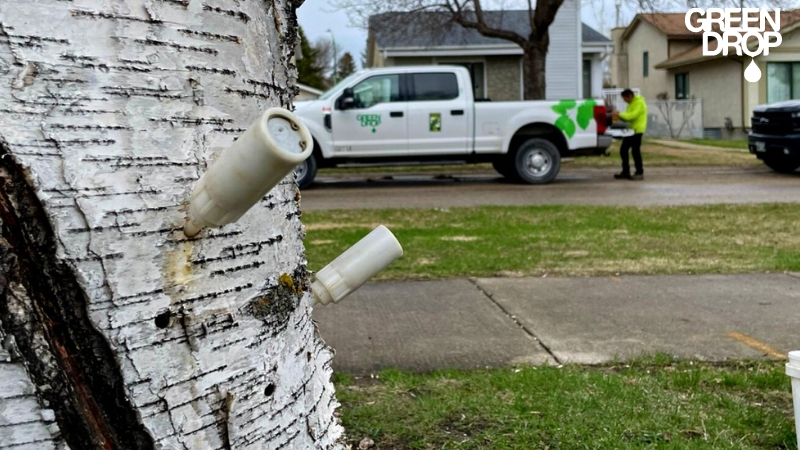
When a tree is diagnosed with a disease, sometimes, not all hope is lost. Some treatment options that can save and restore the tree:
Pruning Infected Limbs: Pruning is often the first line of defence. By carefully removing infected or damaged branches, you can prevent the spread of disease within the tree and to neighbouring trees. This method also helps improve air circulation and sunlight penetration to the remaining parts of the tree, which can enhance its overall health.
Treatments: For certain diseases, especially those caused by fungi or pests, professional treatments can be effective. These might include fungicidal sprays that protect against further infection or systemic injections that target pests like borers or beetles. These treatments are best left to professional arborists.
Improving Soil and Environmental Conditions: The health of a tree is closely tied to its environment. Improving soil quality can provide significant benefits. This might involve increasing organic matter with compost or ensuring proper drainage to prevent root diseases. Additionally, mulching around the tree base can help retain soil moisture, regulate soil temperature, and suppress weed growth.
Water Management: Proper watering is crucial, especially for stressed or diseased trees. Adjusting watering practices based on the tree’s needs can help alleviate stress and support recovery. Over-watering can exacerbate certain diseases, particularly those involving root rot, while under-watering can weaken the tree’s defences against pathogens.
Cabling and Bracing: For trees that suffer from structural weaknesses due to disease or damage, cabling, and bracing may provide additional support to prevent breakage and give the tree a chance to heal. This technique involves installing cables or rods between major branches to redistribute weight and reduce strain on critical points.
Why You Need Professional Tree Inspections
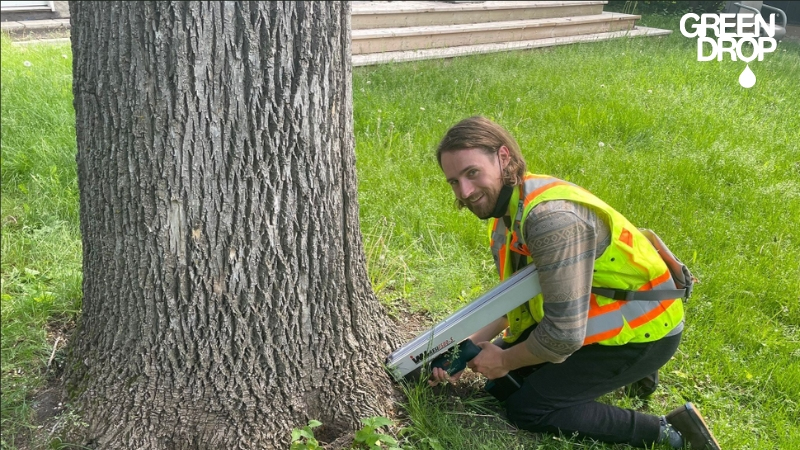
Certified arborists possess the expertise to detect early signs of disease, pest infestations, or structural issues that may not be obvious to the untrained eye. Early detection is crucial in managing tree health, as it can significantly influence the effectiveness of treatments and the likelihood of recovery.
Proactive tree care, which includes regular pruning, proper fertilization, and timely pest management, plays a vital role in preventing diseases and mitigating stress that can predispose trees to serious health issues.
By maintaining a schedule of professional care, you can avoid the drastic measure of removal. You could extend the life of your cherished trees.
Secure Your Tree's Future Today with Green Drop
Is your tree looking a bit under the weather? Don't wait for the symptoms to worsen, and let our tree whisperers give it a health check.
With our comprehensive tree care packages, maintaining your tree’s health has never been simpler. Book a consultation with our experts today, and let’s save your trees. Remember, proactive tree care isn't just a service; it’s a commitment to the longevity and safety of your yard.
We provide a range of tree care services across Western Canada in Calgary, Edmonton, Red Deer, Saskatoon, Regina, and Winnipeg.

